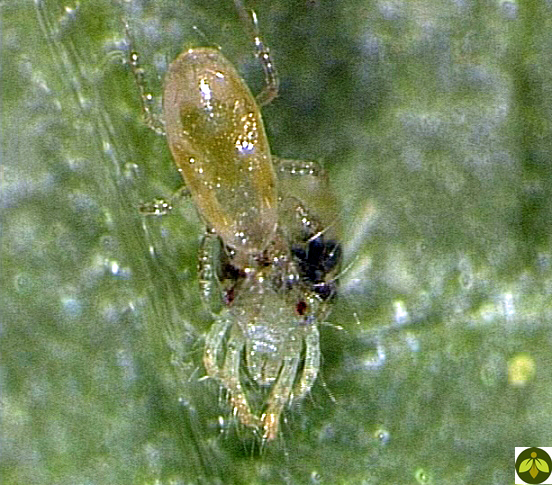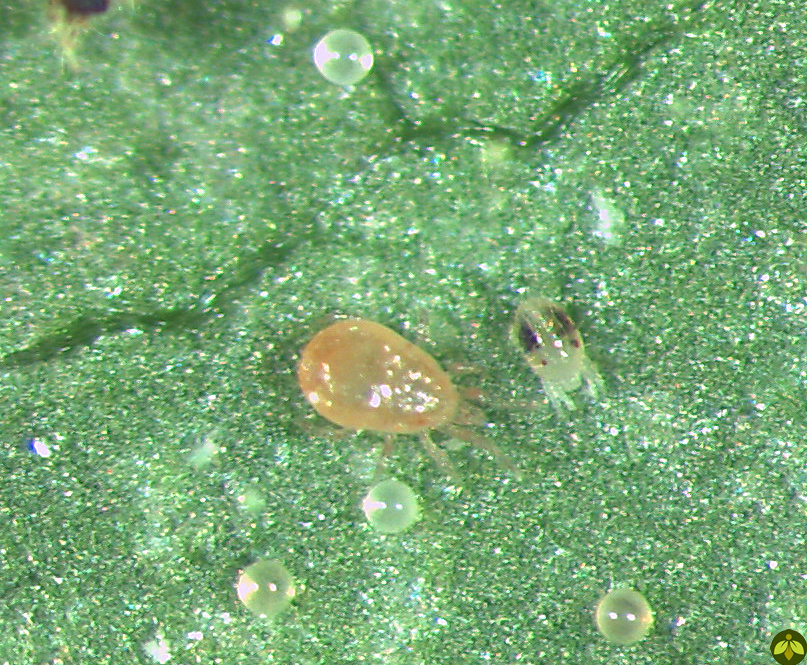Description
 Neoseiulus (=Amblyseius) californicus is used for the prevention, control, and management of various spider mites. These 0.5 mm. mites are noted for their ability to actively hunt in conditions where prey is few and far between. This mite has also made a bit of a name for itself by being able to deal with some of the nearly microscopic species, like broad mites, Polyphagotarsenomus =Hemitarsonemus latus, cyclamen mites, Phtyodromus =Steneotarsonemus pallidus, tomato russet mites — preventively — Aculops lycopersici, etc.
Neoseiulus (=Amblyseius) californicus is used for the prevention, control, and management of various spider mites. These 0.5 mm. mites are noted for their ability to actively hunt in conditions where prey is few and far between. This mite has also made a bit of a name for itself by being able to deal with some of the nearly microscopic species, like broad mites, Polyphagotarsenomus =Hemitarsonemus latus, cyclamen mites, Phtyodromus =Steneotarsonemus pallidus, tomato russet mites — preventively — Aculops lycopersici, etc.
Life-style
N. californicus can lay up to 43 eggs that hatch into extremely small but hungry larvae like the above mentioned species. The life span of these mites is about 8 days as immatures, then for about 20 days as adults. The conditions for optimum performance will be between 50-110°F with a relative humidity of between 40-60%. Please note, however, considerably cooler and warmer temperatures will hamper reproduction and development a certain degree.
Benefits
Scouting
Usages
Release Rates for Neoseiulus californicus
| Classification | Release Information |
|---|---|
| Low infestation | 0.5 per square feet; regular releases are recommended. |
| Hot spots | 2 per square feet |
| Comments | For use in areas where little to no prey mites exist. Works well for prevention. Also useful for other mites. |
| Alert: | Release rate suggestions on these pages are usually not sufficient for cannabis growers. For cannabis release rates check out our Cannabis page or contact us with questions. 1 (800) 477 3715. |



